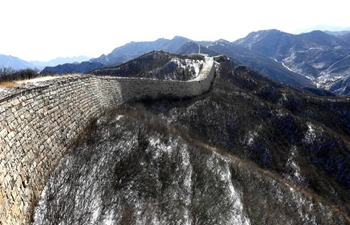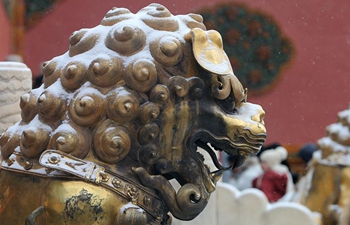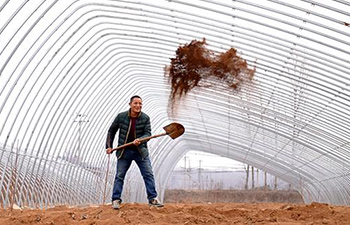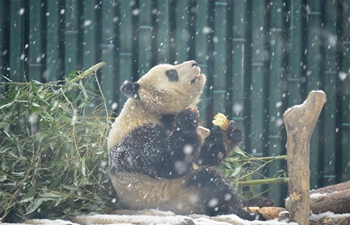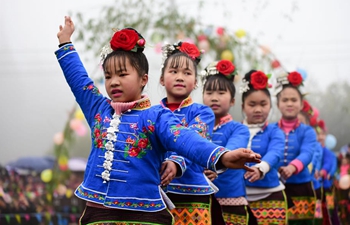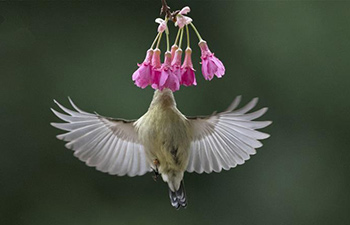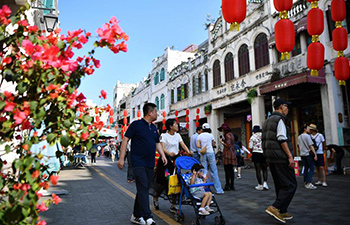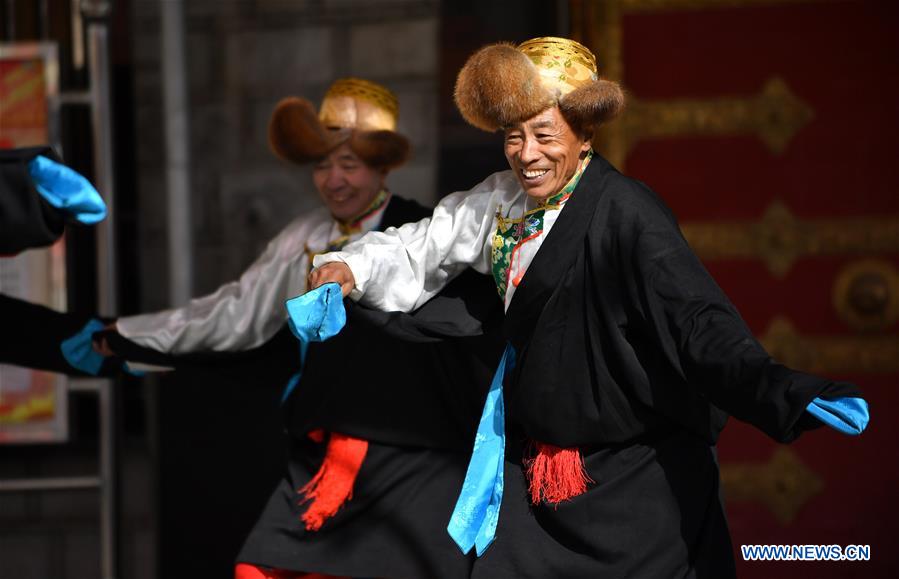
People celebrate the Tibetan New Year in Lhasa, southwest China's Tibet Autonomous Region, Feb. 5, 2019. The Tibetan New Year, known as Losar, is the most important festival in the Tibetan calendar. This year's Losar fell on Feb. 5 and coincided with the Spring Festival. Losar is a time for family reunions. It is marked by religious rituals, long prayers, horse racing, family gatherings and feasts. As the festival draws near, people go shopping, do some cleaning and decorate their folk houses. Families feast on Tibetan food. Women make Kharbse, a popular dish made from flour and yak butter, and guthuk, a traditional snack similar to a dumpling. People plant their own highland barley, which is believed to indicate the harvest in the following year. On the altar in the living room there are placed, a pastry in the shape of a sheep head, a pot of highland barley, dates, air-dried beef, candies, nuts, butter, and brown sugar, presented to pray for prosperity and good weather for crops. In Tibetan "sheep head" is pronounced similarly to "the year's beginning" thus making it an auspicious symbol. Guthuk are sometimes filled with "surprises" including charcoal, wool or chillies. Someone who receives a guthuk filled with wool is described as being "good-natured", while coins or wheat mean good fortune. The food is washed down with highland barley liquor. Celebrations of the Tibetan New Year usually last for 15 days. Local people also participate in activities including Tibetan opera performance, folk dancing, archery and wrestling. (Xinhua/Chogo)





